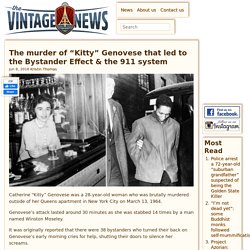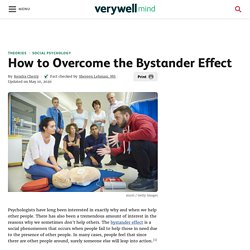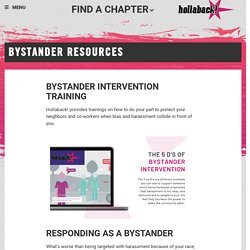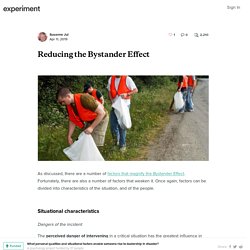

What Is the Bystander Effect? THE BYSTANDER EFFECT. The murder of "Kitty" Genovese that led to the Bystander Effect & the 911 system. Catherine “Kitty” Genovese was a 28-year-old woman who was brutally murdered outside of her Queens apartment in New York City on March 13, 1964.

Genovese’s attack lasted around 30 minutes as she was stabbed 14 times by a man named Winston Moseley. It was originally reported that there were 38 bystanders who turned their back on Genovese’s early morning cries for help, shutting their doors to silence her screams. Although that judgment was later proven to be inaccurate, the murder was considered the driving force behind our emergency 911 system today and the discovery of the term that so many psychologists are still researching: “The Bystander Effect.” It was around 3 o’clock in the morning when Genovese arrived home from managing a local bar where she worked. Kitty Genovese She parked her car and started walking towards her apartment building, when she noticed a man standing at the corner end of the parking lot.
Genovese nervously kept walking. Studio photo of Catherine “Kitty” Genovese, 28. The Importance of Bystander Power. The Bystander Effect vs. The Good Samaritan Effect. Shoppers defend mom from another shopper's verbal abuse at supermarket. Bystanders are Essential to Bullying Prevention and Intervention. How to Overcome the Bystander Effect. Psychologists have long been interested in exactly why and when we help other people.

There has also been a tremendous amount of interest in the reasons why we sometimes don't help others. The bystander effect is a social phenomenon that occurs when people fail to help those in need due to the presence of other people. In many cases, people feel that since there are other people around, surely someone else will leap into action.1 While the bystander effect can have a negative impact on prosocial behavior, altruism and heroism, researchers have identified a number of different factors that can help people overcome this tendency and increase the likelihood that they will engage in helping behaviors.2 Some of these include: Witnessing Helping Behavior Sometimes just seeing other people doing something kind or helpful makes us more willing to help others. Imagine that you are walking into a large department store. Being Observant Being Skilled and Knowledgeable Guilt Feeling Good. Bystander Intervention Resources.
Bystander Intervention Training Hollaback!

Provides trainings on how to do your part to protect your neighbors and co-workers when bias and harassment collide in front of you. What’s worse than being targeted with harassment because of your race, sex, religion, color, gender, size, orientation, disability, age, or origin? Being targeted while surrounded by bystanders who see what is happening, but then do nothing. It doesn’t have to be that way. At this moment in history, we are witnessing a spike in disrespect, harassment, and hate violence. You can make a choice to actively and visibly take a stand against harassment. What are Hollaback!’ Hollaback!’ History: In 2012, we partnered with the bystander program Green Dot (who pioneered the Three D’s of bystander intervention) to develop tools to help you intervene when you see harassment happen. How do I train others using Hollaback!’
Distraction is a subtle and creative way to intervene. Pretend to be lost. Document Delay Direct You Are Powerful. Reducing the Bystander Effect. As discussed, there are a number of factors that magnify the Bystander Effect.

Fortunately, there are also a number of factors that weaken it. Once again, factors can be divided into characteristics of the situation, and of the people. Situational characteristics Dangers of the incident The perceived danger of intervening in a critical situation has the greatest influence in reducing the Bystander Effect. Several explanations could account for the role of perceived danger. Most fundamentally, the arousal: cost–reward model suggests that taking action is a response to the physiological arousal engendered by a critical situation, and that … bystanders intervene in part because they seek to reduce their own arousal [1] Presumably, bystanders experience stronger arousal the more dangerous they perceive the situation to be, making the reward for intervening—in terms of reducing arousal—correspondingly greater.
Online Bystander Intervention: Your Voice Matters! Training. In addition to the ADVANCEGeo Partnership's bystander intervention workshops, this page contains a compilation of common training programs on bystander intervention and other strategies to address harassment, sexual violence, and bias.

Bystander intervention training Hollaback! Online Training Hollaback! 's online training platform prepares participants to be effective bystanders to public harassment incidents based on the "5 D's". Green Dot Green Dot workshops focus on intervening against acts of personal violence, including sexual assault, dating and domestic violence, stalking and bullying for children and adults and is common on many college campuses. NewPoint –Step UP!